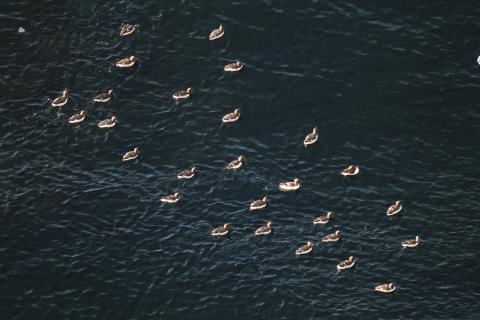Context
Offshore Renewable Developments (ORDs) have the potential to make a significant contribution to the Scottish Government’s target to generate 50% of overall energy consumption from renewable sources by 2030. However, offshore renewable developments also have the potential to affect seabirds that are protected by legislation, notably via collisions with turbine blades and through displacement from important habitat, and there is a requirement on Scottish Government to deliver ORDs in a sustainable manner in accordance with the requirements of this legislation. A key concern is that Population Viability Analyses (PVA), which are the standard method of forecasting future population change of seabirds as part of ORD assessments, do not currently account for any effects of environmental change on populations. In reality, however, many seabird species in the UK have shown marked declines in recent decades and there is widespread evidence that these are in part caused by changes in marine ecosystems as a result of climate change. Climate change can affect seabird populations indirectly via changes in food supply, or directly such as through mortality from extreme weather.
Key contribution
In this project, we examined the potential impacts of climate change by quantifying the effects of climate on seabird distribution, abundance and demography for breeding colonies on the east coast of Scotland. We developed future projections for the spatial distribution and abundance at seabird foraging areas and for demographic rates, abundance, and evaluated the influence of varying foraging ranges at seabird breeding colonies on access to suitable climate conditions. BioSS and UKCEH jointly delivered the statistical analyses of abundance and demography, with BioSS focusing on the choice of statistical methods and the development of code.
Future innovation
The ECOWINGS project will develop this strand of work further, by more explicitly accounting for the role of prey in translating environmental changes into impacts on seabird demography, and by allowing the impacts of ORDs to be assessed against a shifting baseline.
Acknowledgements
The project was funded by Marine Scotland, led by UKCEH, and in collaboration with Bangor University and the SeaWatch Foundation.


